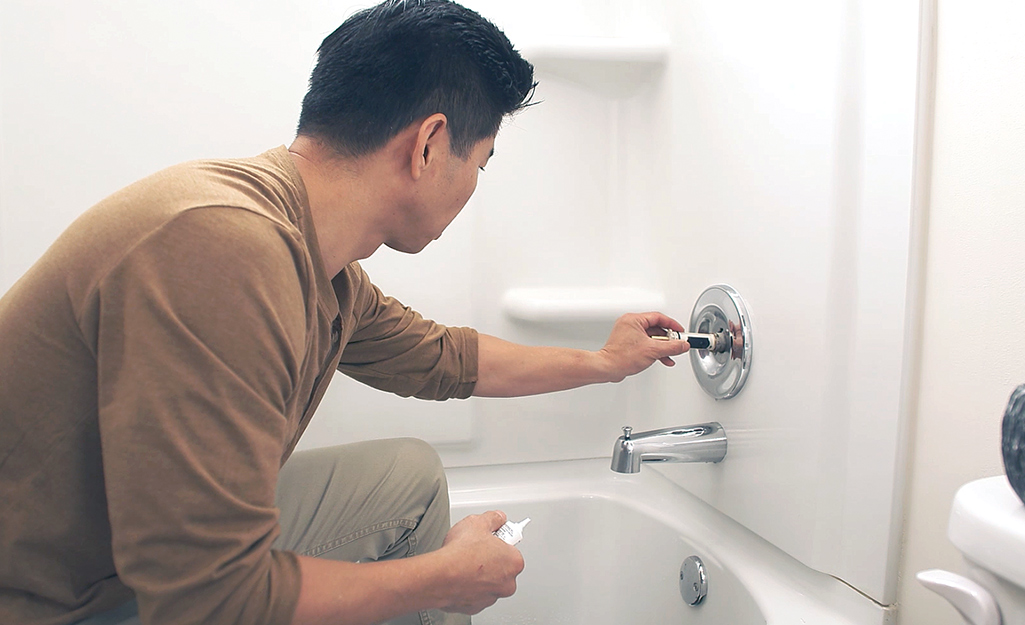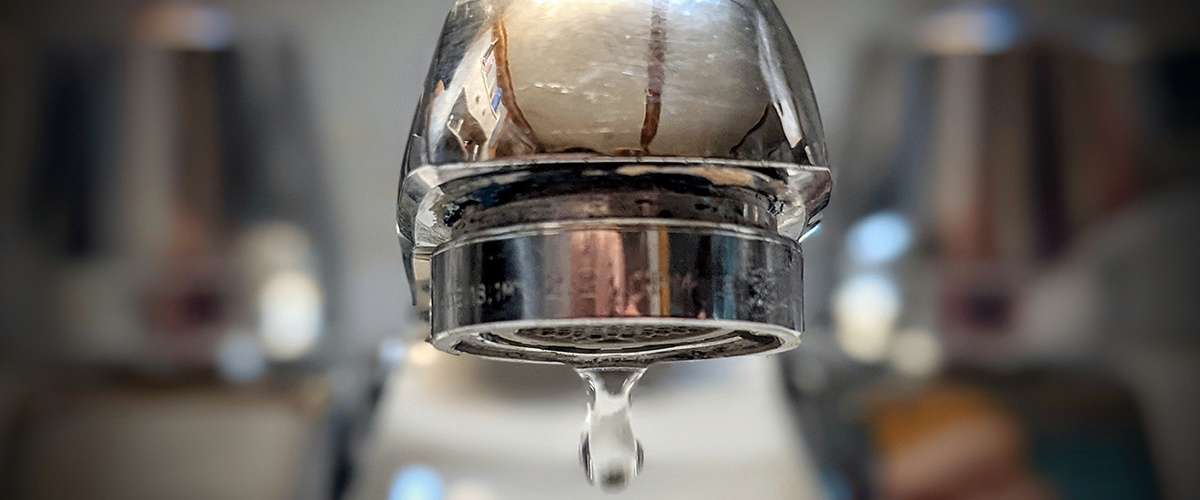How It's Significant to Correct a Leaking Faucet
How It's Significant to Correct a Leaking Faucet
Blog Article
This great article below on the subject of Why Are My Faucets Dripping (And Can I Fix It Myself)? is seriously stimulating. Read it yourself and see what you think about it.

Trickling taps may seem like a small hassle, yet their effect surpasses simply the annoyance of the noise. From wasting water to sustaining unnecessary economic costs and health and wellness dangers, disregarding a trickling tap can result in various consequences. In this article, we'll delve into why it's vital to address this typical house issue without delay and successfully.
Wastage of Water
Environmental Influence
Leaking taps add substantially to water wastefulness. According to the Epa (EPA), a solitary tap dripping at one drip per second can waste more than 3,000 gallons of water per year. This not just pressures water sources but also influences communities and wild animals based on them.
Step-by-Step Overview to Repairing a Dripping Faucet
Tools Required
Before trying to fix a dripping faucet, gather the necessary tools, including a flexible wrench, screwdrivers, substitute parts (such as washers or cartridges), and plumber's tape.
Typical Faucet Issues and Their Solutions
Determine the type of faucet and the specific concern creating the drip. Usual troubles consist of damaged washing machines, rusty shutoff seats, or malfunctioning O-rings. Refer to maker directions or online tutorials for step-by-step advice on repair work.
Financial Prices
Boosted Water Expenses
Beyond the environmental effect, trickling taps can inflate water bills substantially. The collected wastefulness in time converts into higher utility expenditures, which can have been stayed clear of with prompt repair work.
Potential Residential Or Commercial Property Damages
Moreover, extended leaking can lead to harm to components and surfaces bordering the faucet. Water build-up can cause discoloration, deterioration, and also architectural issues if left ignored, causing added fixing expenses.
Health and wellness Worries
Mold And Mildew and Mold Development
The consistent existence of wetness from a trickling faucet creates an ideal environment for mold and mold development. These fungis not only endanger interior air top quality however likewise posture health risks, especially for individuals with breathing conditions or allergies.
Waterborne Illness
Stagnant water in leaking faucets can end up being a breeding place for germs and various other virus, enhancing the risk of waterborne illness. Contaminants such as Legionella germs grow in stationary water, potentially resulting in serious ailments when consumed or inhaled.
DIY vs. Professional Repair work
Benefits and drawbacks of DIY Repair Service
While some might attempt to repair a trickling faucet themselves, do it yourself repair work come with their own set of obstacles. Without proper knowledge and devices, do it yourself efforts can exacerbate the issue or cause incomplete repairs, prolonging the issue.
Advantages of Working With an Expert Plumber
Hiring a specialist plumber guarantees that the underlying root cause of the trickling faucet is addressed successfully. Plumbing professionals have the knowledge and equipment to detect and fix tap problems successfully, conserving time and decreasing the danger of further damages.
Ecological Responsibility
Specific Contribution to Preservation
Taking duty for repairing leaking taps aligns with broader initiatives toward water preservation and environmental sustainability. Every individual's actions collectively make a considerable impact on preserving precious sources.
Sustainable Living Practices
By focusing on punctual repair work and embracing water-saving routines, people add to lasting living methods that benefit both present and future generations.
Preventive Measures
Regular Upkeep Tips
To avoid leaking taps, do routine maintenance such as cleaning up aerators, examining for leakages, and changing worn-out parts without delay. Furthermore, think about setting up water-saving gadgets or updating to a lot more effective components.
Value of Prompt Repair Works
Dealing with trickling taps as quickly as they're discovered avoids further water wastefulness and potential damages, inevitably saving both water and money over time.
Effect On Building Worth
Assumption of Well-Maintained Home
Keeping a home in good condition, consisting of resolving upkeep issues like leaking faucets, improves its perceived worth and charm among potential customers or renters.
Impact on Resale Worth
Characteristics with well-kept plumbing fixtures, consisting of taps, command higher resale worths in the property market. Dealing with dripping taps can add to a favorable impression during building inspections and settlements.
Conclusion
Addressing a dripping faucet surpasses mere comfort; it's a necessary step toward saving water, reducing economic prices, and securing health and wellness and home. Whether via do it yourself repairs or expert help, doing something about it to repair trickling taps is a small yet impactful means to promote responsible stewardship of sources and contribute to a much healthier, extra sustainable future.
How to Fix a Dripping or Leaky Faucet
A leaking faucet is one of the most common problems that homeowners encounter, but it being commonplace doesn’t make it any less annoying. The constant drip drip drip of a leaking bathtub faucet, showerhead, or sink tap can disturb your home’s serenity. Left neglected, a dripping faucet can also result in higher water bills and discoloration or mold growth in your sink or plumbing fixtures.
Fortunately, you don’t have to be a trained plumber to know how to stop a dripping faucet. With some basic tools, replacement parts, and a little patience, leaky faucet repair is a breeze. In this article, we’ll explain what causes dripping faucets and how you can fix them.
What Causes a Leaking Faucet?
Kitchen and bathroom faucets come in all manner of designs, but most involve some combination of valves, O-rings, seals, and washers. The O-ring is usually the weakest link, but any one of these pieces can wear down over time. Heat, moisture, temperature fluctuations, minerals, mold, and movement can contribute to warping and corrosion, breaking the watertight seal. This just comes with the territory of being a homeowner. Everything is always subject to wear and tear, and some component parts of your appliances and fixtures need to be replaced on occasion. At least replacement O-rings are cheap!
More rarely, dripping faucets can be a symptom of excessively high water pressure. Were this the case in your home, you would probably notice that the leak is not isolated to one faucet. Water pressure issues are harder to resolve on your own. We recommend contacting a professional plumber if you suspect your water pressure is too high.
How to Fix a Dripping Faucet
Pipe wrench or monkey wrench Allen wrench set Screwdrivers Old towel or rag Shut off the water.
Before you do anything, you need to turn off the water to keep from drenching your kitchen or bathroom. You should find a valve under the sink and against the wall. Once you’ve turned this valve, try turning the faucet on to confirm that the water source has been cut off.
If you can’t locate your local valve for the faucet you’re working on, you can always shut off the water to the house at the main valve. Of course, this will prohibit anyone from using the sinks, showers, or toilets while you’re working on the faucet that’s giving you trouble.
Plug or block the drain.
You’ll be disassembling the faucet and removing some small bits of hardware. Plug the drain with a stopper or rag to avoid the possibility of a small screw falling into your P-trap.
Take apart the faucet assembly.
There are several varieties of kitchen and bathroom faucets, each with its own manner of assembly. For detailed instructions on how to disassemble your faucet, you can refer to the fixture’s manual or contact the manufacturer. If you know whether you have a ball, disc, cartridge, or compression faucet, you can find detailed schematics online.
In general, you need to begin by removing the faucet handles. You might notice a small screw that you’ll need to remove with a screwdriver or Allen wrench. If you don’t see any visible securing hardware, it’s likely hidden under a decorative cap that can be unscrewed or popped off with flathead screwdriver.
Remove each piece methodically, consulting a schematic when necessary. Take notes or arrange the pieces in such a way to make it easier to correctly reassemble the faucet later.
Remove the cartridge.
Once you’ve removed the handles and securing hardware, you should be able to remove the valve cartridge or stem. Some cartridges will slide right out. Other faucet models will require you to loosen a nut with a pipe wrench before you can remove the valve stem.
Examine the exposed hardware.
With the cartridge or stem removed, inspect the component parts. Check the rubber O-rings for wear and tear. Also examine the seat washer for corrosion or other damage. These pieces are usually the responsible parties for a dripping faucet, but it’s worth inspecting the other component parts while you have the faucet disassembled.
Find replacement parts.
Once you’ve identified which faucet component has failed, find an identical replacement. Your local hardware store should have O-rings, seat washers, and other standard components in stock. If you have a luxury or uncommon faucet, you may have to contact the manufacturer for a replacement part.
It’s a good idea to take your old parts with you to the hardware store so you can compare them with the store’s inventory and be sure you’re purchasing the correct replacement.
Reassemble the faucet.
With your new parts in hand, reconstruct the faucet and handles. Don’t be tempted to overtighten screws or nuts. You might think this could create a better seal, but it can instead damage or bend a delicate part of the assembly and create a new problem for you.
Turn on the water and test the faucet.
The only thing left to do is test your work. Unplug the sink, turn the water back on, and try the faucet. Congratulate yourself on a job well done!
https://www.libertyhomeguard.com/how-to-fix-a-dripping-or-leaky-faucet/

Do you enjoy reading up on How to Fix a Dripping or Leaky Faucet ? Create feedback directly below. We will be glad to listen to your opinions about this posting. We are looking forward that you come back again soon. Are you aware of another person who is fascinated with ? Be sure promote it. We truly appreciate your readership.
Report this page